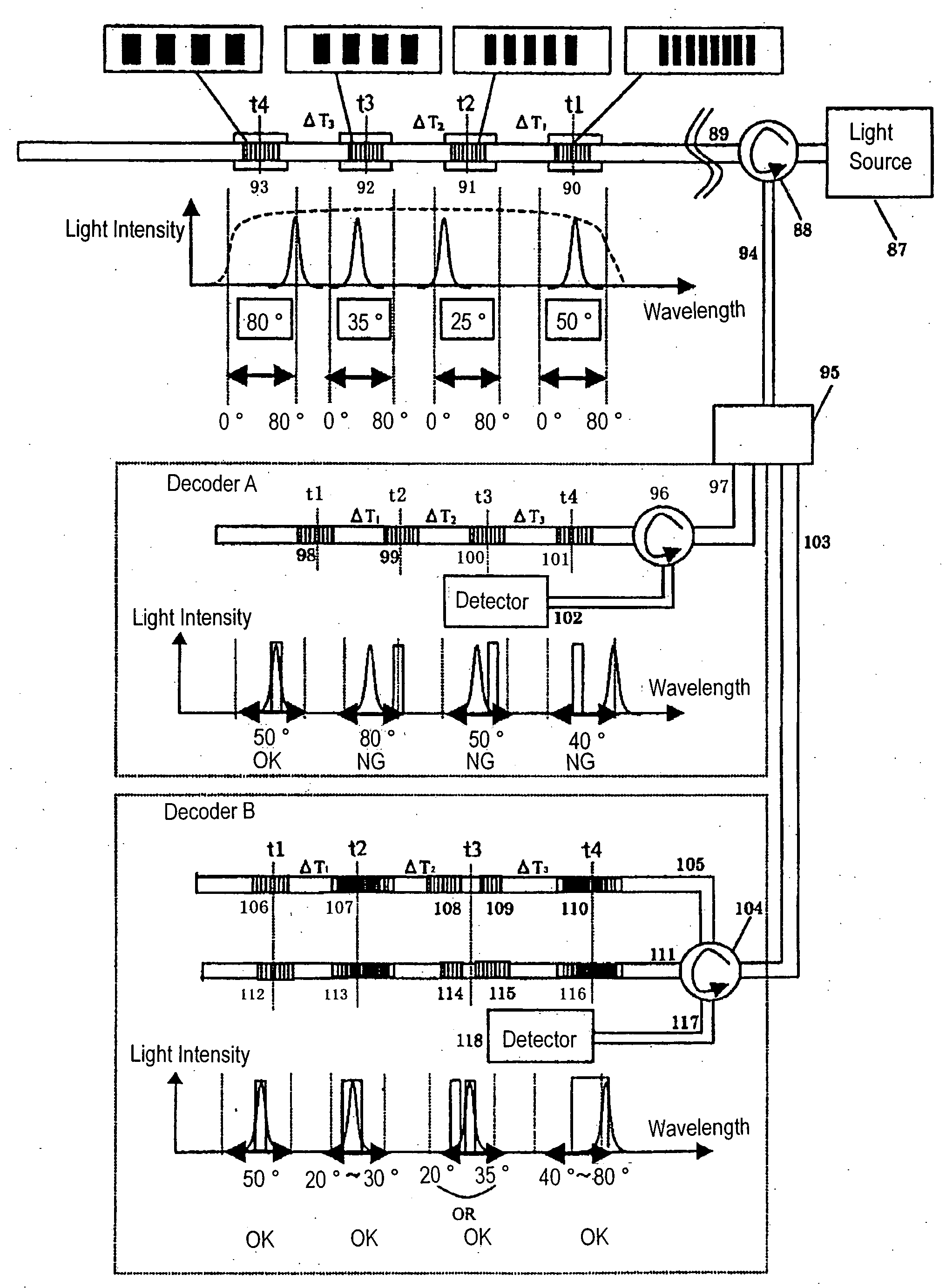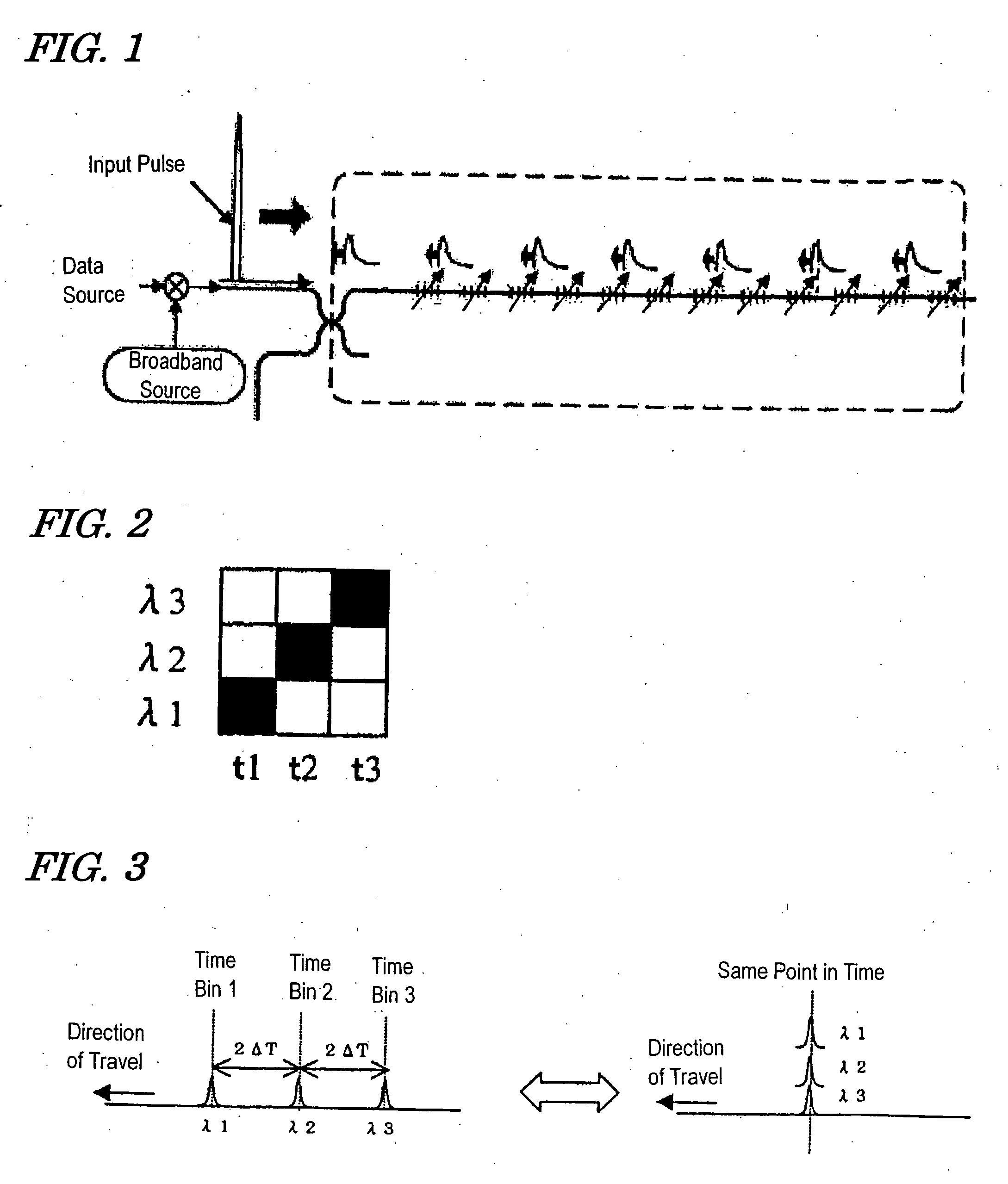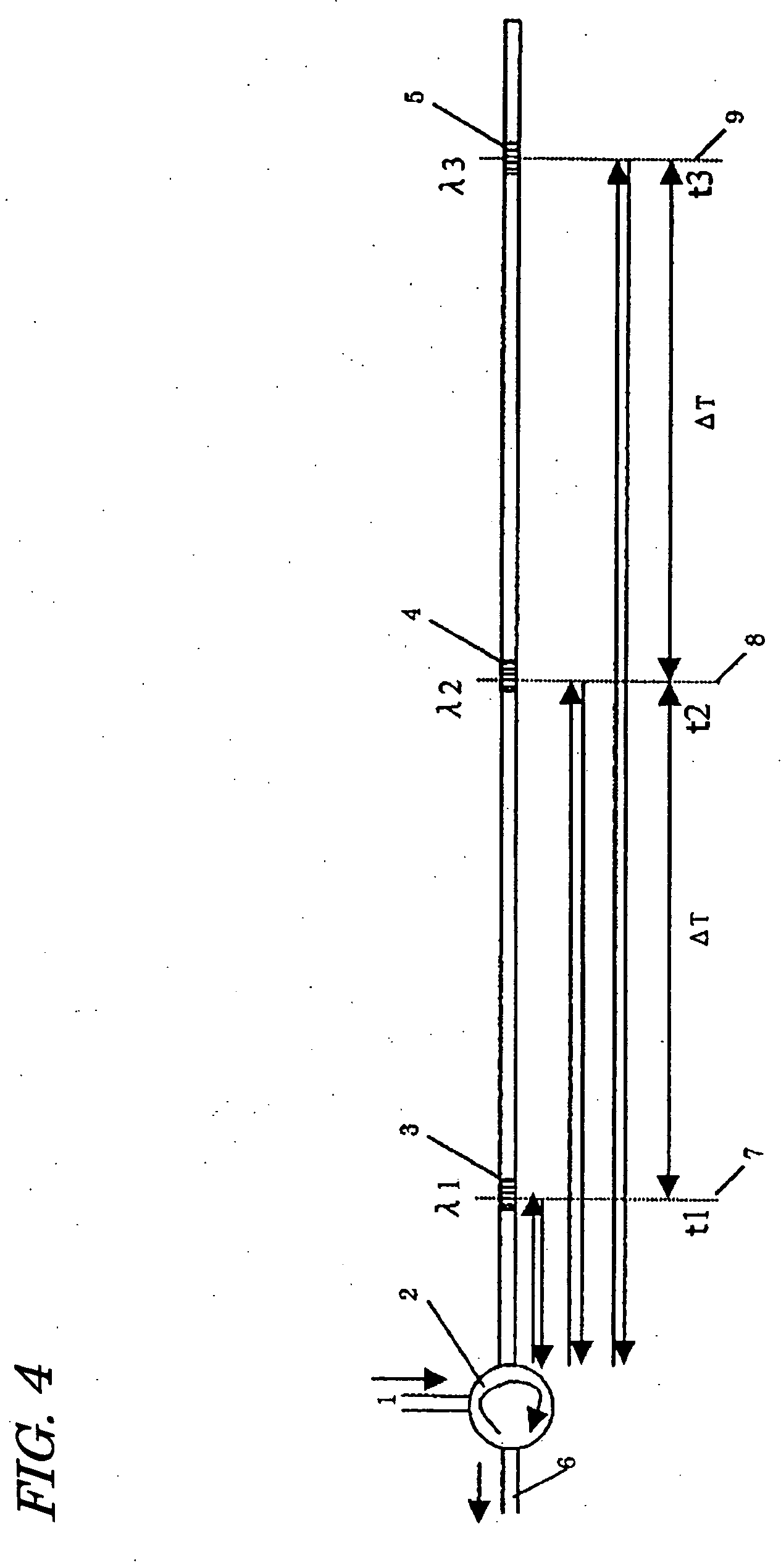Encoder/decoder for optical CDMA
- Summary
- Abstract
- Description
- Claims
- Application Information
AI Technical Summary
Benefits of technology
Problems solved by technology
Method used
Image
Examples
embodiment 1
[0086] Hereinafter, preferable embodiments of the encoder according to the present invention will be described.
[0087] First, FIG. 10 will be referred to. An encoder shown in FIG. 10 is able to perform an encoding according to the code pattern shown in FIG. 8. In other words, a plurality of wavelengths λ1, λ4 and λ5 are assigned to a time bin t1.
[0088] In FIG. 10, an axis 48 indicates a position corresponding to a time bin t1; an axis 49 indicates a position corresponding to a time bin t2; and an axis 50 indicates a position corresponding to a time bin t3. The axis 48 crosses gratings 39 and 43 corresponding to a wavelength λ1; the axis 49 crosses gratings 40 and 46 corresponding to a wavelength λ2; and the axis 50 crosses the gratings 41 and 47 corresponding to a wavelength λ3. Each interval between the axes 48, 49 and 50 constitutes an optical path difference corresponding to a time difference of ΔT / 2. Therefore, as light travels back and forth over each interval, the light recei...
embodiment 2
[0101] Next, with reference to FIG. 12, other embodiments of the encoder / decoder according to the present invention will be described.
[0102] In Embodiment 1, a group of discrete wavelengths (e.g., λ1, λ4 and λ5) are assigned to the same time bin. In the present embodiment, it is possible to assign a predetermined continuous range of wavelengths (wavelength band) to the same time bin.
[0103]FIG. 11 shows an exemplary code pattern for the apparatus of the present embodiment. In the example of FIG. 11, an infinite number of wavelengths within a continuous range from λ1 to λ1+Δλ are assigned to the time bin t1. Although it would similarly be possible to assign a wavelength range of λ2 to λ2′ to the time bin t2 and a wavelength range of λ3 to λ3′ to the time bin t3, FIG. 11 illustrates an example where wavelengths λ2 and λ3 are assigned, for simplicity.
[0104] A light pulse which has propagated through an optical fiber 53 is transmitted through a circulator 54 to enter a first optical f...
embodiment 3
[0109] Next, with reference to FIGS. 13 and 14, a third embodiment of the encoder according to the present invention will be described.
[0110] In a code pattern shown in FIG. 13, λ1 and λ1′ are assigned to a time bin t1; λ2 and λ2′ are assigned to a time bin t2; and λ3 and λ3′ are assigned to a time bin t3.
[0111] The encoder of the present embodiment shown in FIG. 14 has a major difference from the encoder of each of the above-described embodiments in that no other grating is inserted between gratings 71, 72, 73, 79, 80 and 81 which are respectively in synchronization with axes 83, 84 and 85 that represent time bins. In the present embodiment, each interval between the axes 83, 84 and 85 is about 0.5 cm, whereas the length of each grating is set to be about 2 cm. Since this structure makes it impossible to adopt the structure shown in FIG. 10 or FIG. 12, the present embodiment adopts the structure of FIG. 14.
[0112] In the present embodiment, as shown in FIG. 14, a light pulse whic...
PUM
 Login to View More
Login to View More Abstract
Description
Claims
Application Information
 Login to View More
Login to View More - R&D
- Intellectual Property
- Life Sciences
- Materials
- Tech Scout
- Unparalleled Data Quality
- Higher Quality Content
- 60% Fewer Hallucinations
Browse by: Latest US Patents, China's latest patents, Technical Efficacy Thesaurus, Application Domain, Technology Topic, Popular Technical Reports.
© 2025 PatSnap. All rights reserved.Legal|Privacy policy|Modern Slavery Act Transparency Statement|Sitemap|About US| Contact US: help@patsnap.com



